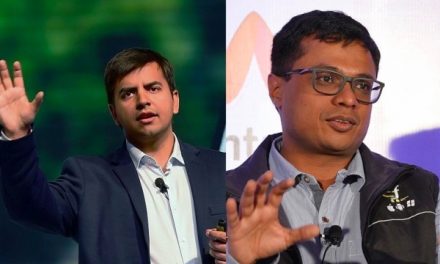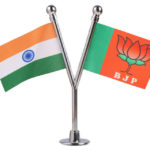Digital India as the Gateway to “Ek Bharat, Shreshtha Bharat“
Governments world over are expected to be responsible for policy formulation, and efficient execution of those policies apart from the daily humdrum of governance. When a committed government applies its collective mind and formulates long term policies which are well thought through, and efficiently implemented, the impact on the citizenry and national economy can be exponential and long lasting.Some examples of successful policy decisions of Janata/NDA governments which have worked out very well are introduction of Provident Fund Scheme by in 1978, enabling domestic manufacturing in IT in 1977, and the very successful STPI scheme launched in 1999.
All these schemes delivered results beyond the expected gains and are examples of successful long term policy measure.The current NDA government has introduced a slew of policy decisions in its last 4 months tenure, most of which have been appreciated by people and industry at large. One of the most significant policy announcements has been the one related to “Digital India” programme.Digital India is conceived as an ambitious programme to transform India into digitally empowered Society and knowledge economy”. The vision of a Digital India is centered on three key areas – Digital infrastructure as a utility to every citizen, Governance and Services on Demand, and Digital Empowerment of Citizens.
This programme brings together Nine different IT initiatives of Government under DeitY (Department of Electronics and Information Technology), some ongoing and some new.The overall investments provisioned over the next 5 years are ambitious 1,13,000 Crores for this. The 9 initiatives are – Broadband Highways, Universal Mobile Access,Public Internet Access Programme, E-Governance, E-Kranti (Electronic Service Delivery), Information for All, Electronics Manufacturing, IT for Jobs, Early Harvest Programmes.The targets defined for this programme over a 5 year period are ambitious and laudable. 2.5 Lakh villages are expected to be connected via broadband with WifI in 2.5 Lakh Schools. More than 10 crores of direct and indirect jobs are expected to be created while 1.7 crore youth are targeted for training in jobs in IT/BPO/Telecom and Electronics. 400000 Public Internet Access points will be set up across the country with wi-fi hot spots set up in all cities with more than 10 Lacs population.
A most desirable target is net zero imports in electronics by 2020 (The current electronics imports are $100 Bn and could grow to $400 Bn by 2020 in case of status quo).
The target figures as envisaged by Government, while ambitious, are not impossible to achieve. What seems to have gone unnoticed is the downstream impact this programme will have in other aspects of Economy. The primary achievement of this programme will be to ensure last mile connectivity which allows every citizen to be connected to the economy through an access device which could be a simple mobile handset.
Once an average citizen starts leveraging the mobile device to operate bank accounts, transact with banks, and get access to the information, the impact on the commerce will be manifold.This last mile connectivity will ensure increase in average income levels, in the average business transacted through banks and the overall growth in mobile and ecommerce due to this last mile connectivity will be tremendous. This combined with the downstream growth in brick and mortar sector will push the overall GDP growth as well. As per a world bank report, a 10% increase in a country’s broadband connections leads to a 1.38% rise in its gross domestic product. India’s broadband penetration today is lowly 2% and this project aims to change that significantly.
There is a huge headroom for growth in rural areas as the internet penetration is merely 8.6% as compared to 37% in urban areas. The qualitative aspect of this initiative will have a far reaching impact. Access to information on fingertips will lead to unprecedented transparency and speed of communication and strengthen the cause of democracy in India. This will drive further the grassroots participation in democracy and help India harness the “demographic dividend” which the PM so often talks about. The recent radio address by PM on every Sunday at 11am can reach every common man who has a mobile handset since all handsets now have FM radio as default feature.
The communication between government and the last person standing can become very effective making the concept of “inclusive governance” eminently possible and practical. It will also have the unintended effect of unifying India by connecting every individual.The challenges in making this work are manifold, and it will be a long haul. With newsreports suggesting that Modi will personally monitor this project, and set clear deadlines, one definitely has reason to be optimistic. Already global IT leaders like IBM, CISCO, Facebook and Google have expressed their keen interest to participate in this project If we cross these hurdles and are able to make this work, the Digital India programme will become the gateway to “Ek Bharat, Shrestha Bharat” (One India, Supreme India).









